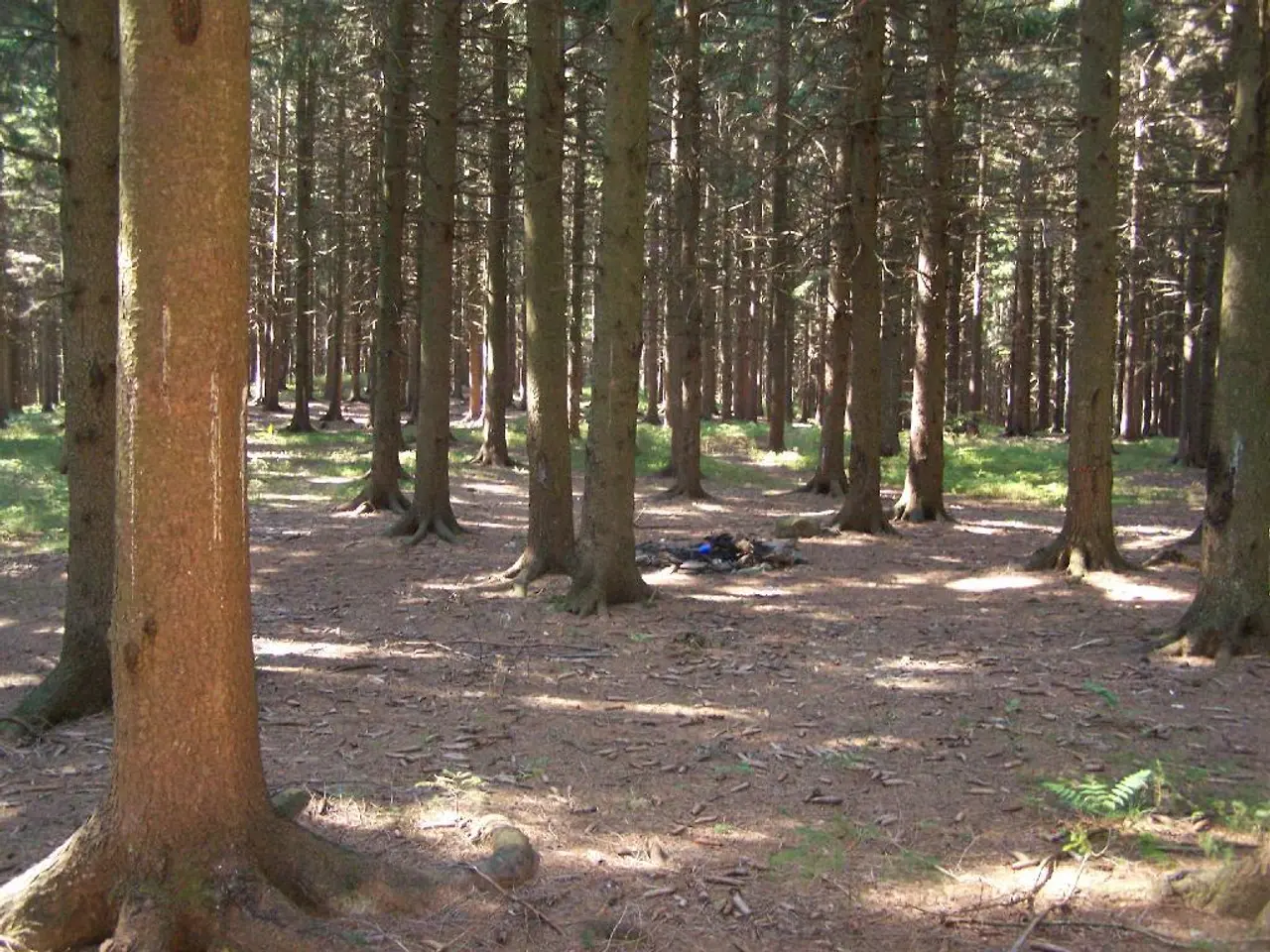Guide for Cascading Bonsai Shapes: Methods for Curved Trunks and Dynamic Movement
In the world of bonsai, the art of growing trees at an angle to evoke a sense of movement and tension has gained popularity. This technique, known as Slanting Bonsai, involves carefully selecting tree species, wiring, pruning, and styling to achieve natural flow and balance in the design.
**Key Steps and Techniques**
1. **Tree Species Selection:** Choosing the right species is crucial. Opt for trees with flexible branches and good response to wiring and pruning, such as maples, pines, junipers, or elms. Young, healthy trees with supple trunks are preferred for easier shaping.
2. **Trunk Movement and Styling:** Start by selecting the main trunk line with a natural slant or one that can be guided into a slanting, curved sloping form. Aim for a dynamic, graceful form that suggests natural growth patterns, such as a tree growing over a cliff or riverbank. Create curves and bends in the trunk early to set the foundation for the style.
3. **Wiring Techniques:** Use aluminum or copper bonsai wire to shape the trunk and branches. Apply wire gently but firmly, starting with the trunk’s base and moving upward. Bend the trunk in gentle curves, aiming for a balance of tension and natural movement. Wiring is often done in stages, adjusting and refining the shape over time.
4. **Pruning and Foliation Management:** Prune to maintain balance and proportion according to the dynamic slanting style. Selectively remove branches that disrupt flow or balance. Use pruning to encourage branching in directions that enhance the natural movement of the trunk. Regular maintenance pruning keeps the bonsai looking fresh and vibrant.
5. **Styling Principles:** Focus on balance, asymmetry, rhythm, and naturalism. Aim for movement and energy in the tree’s silhouette. Early directional training encourages the overall slant and curvature. Consider future growth patterns to avoid wire scarring or unnatural bends. Learn and follow classical bonsai styles such as slanting (Shakan) or semi-cascade (Han-Kengai) as frameworks for dynamic shaping.
By following these steps, you can create a bonsai that expresses both movement and grace through its slanting trunk and curved branches, resulting in a visually engaging and harmonious small tree.
Detailed step-by-step visual demonstrations and tutorials provide practical insights on applying wiring, shaping trunks, and initial styling for dynamic bonsai forms. For instance, the June 2025 Norway Maple semi-cascade training video offers valuable insights on creating dynamic bonsai forms [1].
Preserving Natural Branch Patterns, pruning for movement and flow, preparing the bonsai for wiring, and focusing on taper and flow, curvature and twist, contrast and harmony, visual weight, and styling branches for visual flow are other key elements in creating a dynamic Slanting Bonsai.
[1] Link to the tutorial or video.
- In the realm of fashion-and-beauty, the application of asymmetry and movement can evoke a sense of style that is both dynamic and graceful, much like Slanting Bonsai.
- Just as in the process of Slanting Bonsai, careful tree selection is essential when choosing a new lifestyle, opting for versatile options with good shape and growth potential, such as education-and-self-development opportunities or pets that suit your needs.
- When planning your food-and-drink menu for an event, consider the natural flow and balance, ensuring a variety of flavors and textures for visual appeal and enjoyment, akin to the wiring and pruning techniques in Slanting Bonsai.
- Putting together a stunning home-and-garden design involves careful placement and shaping, just like Slanting Bonsai. Consider creating a dynamic focal point by choosing curved pathways, incorporating fashionable furniture with unique shapes, or placing plants in an asymmetrical arrangement to draw the eye in.
- In the world of sports, mastering moves and techniques with a natural flow and balance, like the slanting trunk of a Slanting Bonsai, can take time and practice. Aim for visual elegance and balance, both on and off the field, for a harmonious performance.




